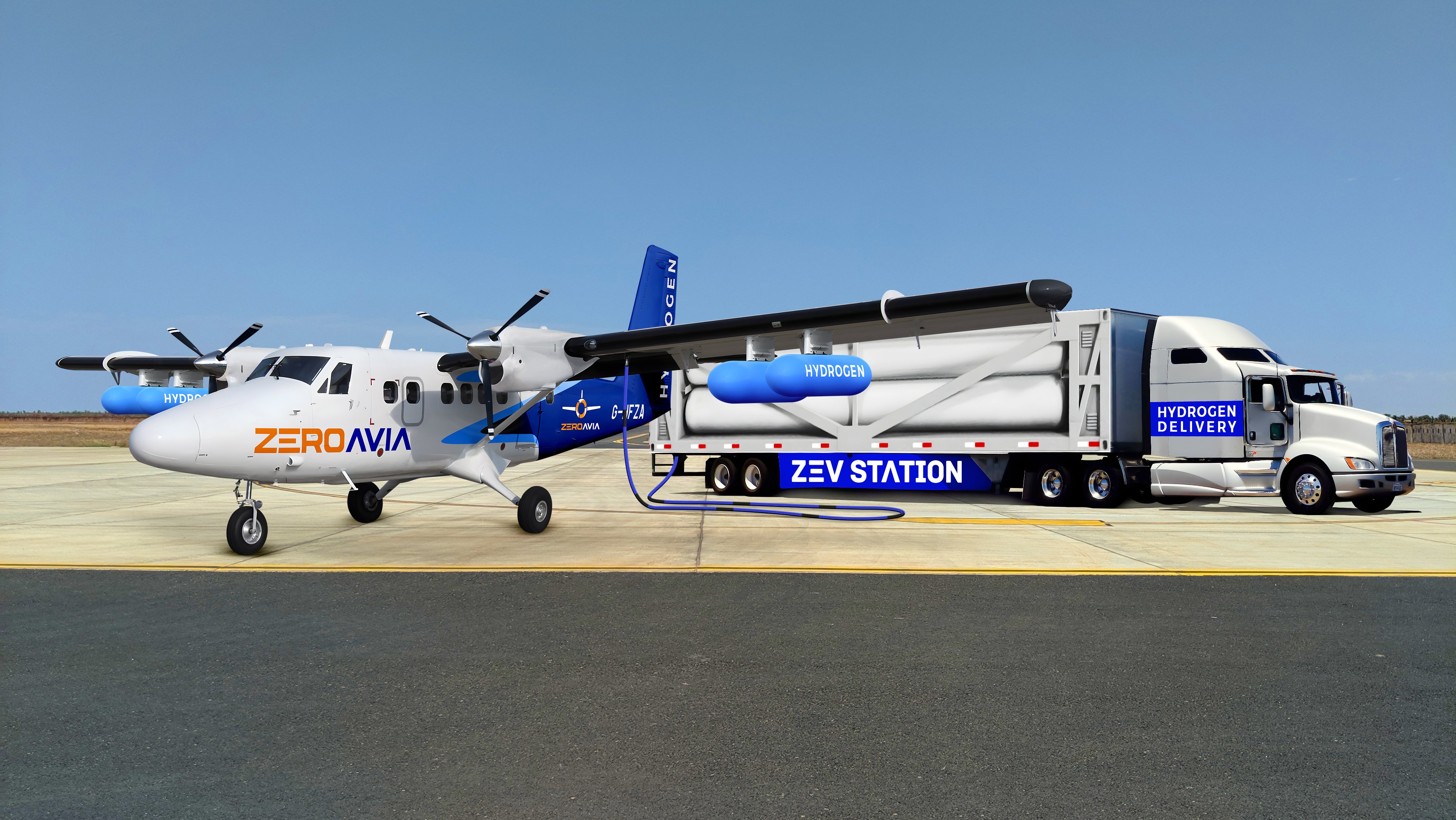Click Here to View This Page on Production Frontend
Click Here to Export Node Content
Click Here to View Printer-Friendly Version (Raw Backend)
Note: front-end display has links to styled print versions.
Content Node ID: 419493
ZeroAvia is stepping up its plans for hydrogen-powered regional airliners through a new partnership with renewable power group Zev Station. In an April 4 announcement, the companies said they will jointly develop green hydrogen refueling infrastructure at an unspecified number of California airports. According to the new partners, their aim is to demonstrate the feasibility of supporting zero-emissions hydrogen-powered regional airline services.
ZeroAvia is developing a hydrogen powertrain to enable aircraft with between 10 and 20 seats to operate on flights of up to around 500 miles. It says it will conduct pilot flight operations at the as-yet-unnamed airports.
Palm Springs, California-based Zev Station is experienced in providing hydrogen gas fuel for road vehicles, as well as electric vehicle recharging, with all supplies guaranteed to be made from 100 percent renewable sources and methods. The company plans to open the first of its new “Premier” highway filling stations in early 2023 to offer electric recharging and hydrogen refueling to car and truck drivers. It will work with ZeroAvia to apply its expertise to establishing workable airport refueling infrastructure.
Last week, the two companies were among the participants in the Vertical Flight Society’s first H-2 Aero Symposium and Workshop, which marked the launch of the group’s H-2 Aero Team initiative to support the development of hydrogen propulsion in aviation.
“We see a unique synergy in our ‘hub and spoke’ hydrogen distribution model and aviation,” explained Zev Station CEO and chief technology officer Jesse Schneider. “For this, we are planning an aircraft fueling demonstration project together with ZeroAvia, also to increase utilization of a hydrogen delivery trailer.”
ZeroAvia has been developing the Hydrogen Airport Refueling Infrastructure concept of operations in partnership with the European Marine Energy Center, which manufactures hydrogen fuel using tidal power. Within the next couple of months, under the HyFlyer II project, ZeroAvia expects to start flight testing a converted 19-seat Dornier Do-228 twin-turboprop aircraft at its development center in the UK.
The Do-228 will be fitted with a 600kW powertrain. This uses hydrogen fuel in an electrochemical reaction within a fuel cell system that produces the electricity needed to power the electric motors that drive the propellers.
ZeroAvia’s work in Europe is also supported by oil and gas company Shell, which is one of its investors, and also by Octopus Hydrogen, which is providing fuel for flight testing. The company is targeting the launch of the first commercial flights between London and Rotterdam in the Netherlands in 2024.
“There is enormous potential for airports to act as hydrogen hubs precisely because there will be significant demand [as] hydrogen-electric propulsion is the only practical, holistic and economically viable solution to the industry’s full climate impact,” said ZeroAvia’s infrastructure vice president Arnab Chatterjee. “California leads the world in the adoption of zero-emission vehicles thanks to forward-thinking policies and deployment of infrastructure, and zero-emission flight infrastructure at airports is the next natural frontier.”
